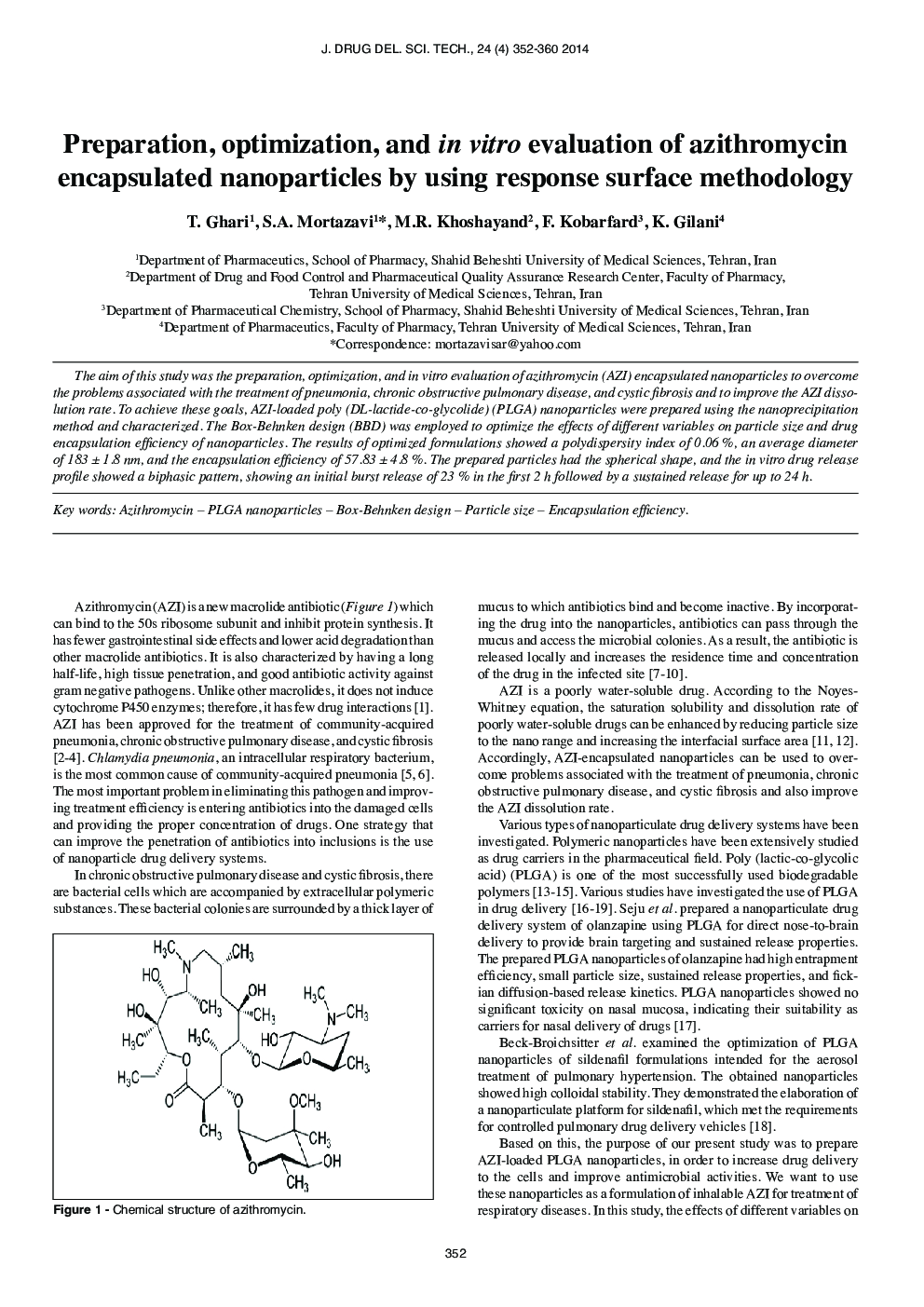| Article ID | Journal | Published Year | Pages | File Type |
|---|---|---|---|---|
| 2483298 | Journal of Drug Delivery Science and Technology | 2014 | 9 Pages |
The aim of this study was the preparation, optimization, and in vitro evaluation of azithromycin (AZI) encapsulated nanoparticles to overcome the problems associated with the treatment of pneumonia, chronic obstructive pulmonary disease, and cystic fibrosis and to improve the AZI dissolution rate. To achieve these goals, AZI-loaded poly (DL-lactide-co-glycolide) (PLGA) nanoparticles were prepared using the nanoprecipitation method and characterized. The Box-Behnken design (BBD) was employed to optimize the effects of different variables on particle size and drug encapsulation efficiency of nanoparticles. The results of optimized formulations showed a polydispersity index of 0.06 %, an average diameter of 183 ± 1.8 nm, and the encapsulation efficiency of 57.83 ± 4.8 %. The prepared particles had the spherical shape, and the in vitro drug release profile showed a biphasic pattern, showing an initial burst release of 23 % in the first 2 h followed by a sustained release for up to 24 h.
